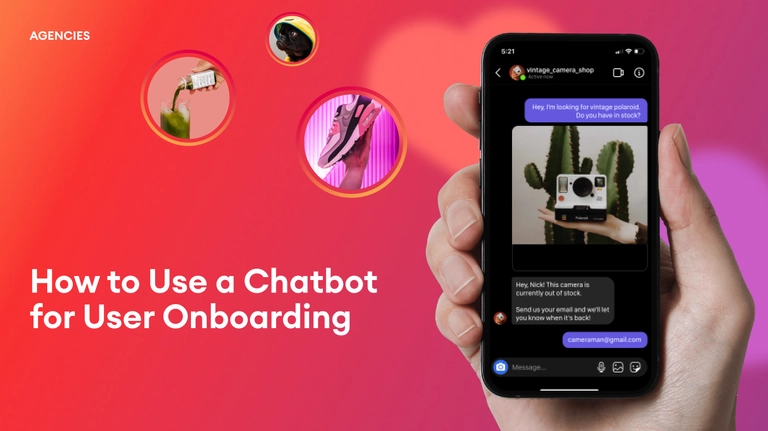
How to use a chatbot to provide an engaging, informative user onboarding experience
The onboarding process is crucial for any app or software. Here's how to use a Messenger chatbot to onboard new users.
For apps and software companies, properly onboarding new users is crucial. Your goal is to help them find success on your platform as soon as possible so that they’ll become a long-term, satisfied customer. Having a human agent run personal onboarding sessions with each new users and checking in with them frequently would be ideal. But of course, that would take major resources that most companies can’t reasonably provide.
Instead, some software companies are turning toward chatbots to manage and improve their user onboarding process. Whether the user has just signed up or is logging in for the first time in a while, a chatbot can help guide them toward success with your app.
Why chatbots make excellent tools for user onboarding
Chatbots—especially those integrated with Facebook Messenger—are useful for lots of different sales and marketing tasks. They can generate leads, recommend products, answer FAQs, and more. The characteristics that make chatbots so helpful in these use cases are the same ones that make them helpful in the customer onboarding process.
The main one is that chatbots are available any time, 24/7. They don’t need time off like human agents do, which means they’re ready to help your customers at any time of day or night, in any time zone. That means they can onboard new users or engage returning users whenever, helping retain customers for your business while you sleep.
In addition to their constant availability, here are a few other reasons chatbots are fantastic tools for customer onboarding:
Chatbots can offer personalized experiences
Messenger chatbots can pull data from the user’s Facebook profile, or from past conversations with them (if applicable). They can also gather information about the user by asking them questions within the bot, or importing information from your CRM or multi-step forms. From there, your bot can use these details (stored in the form of user attributes) in conversation with the user, so the whole experience is personalized to them and their needs.
For example, the chatbot could have the customer’s name, their signup date, last login date, etc. all at hand. When it incorporates this information into the conversation, the customer knows that the advice they’re receiving is specific to them. They’ll feel listened to and will enjoy a better user experience, since they’ll be more likely to get assistance that’s relevant to their situation.
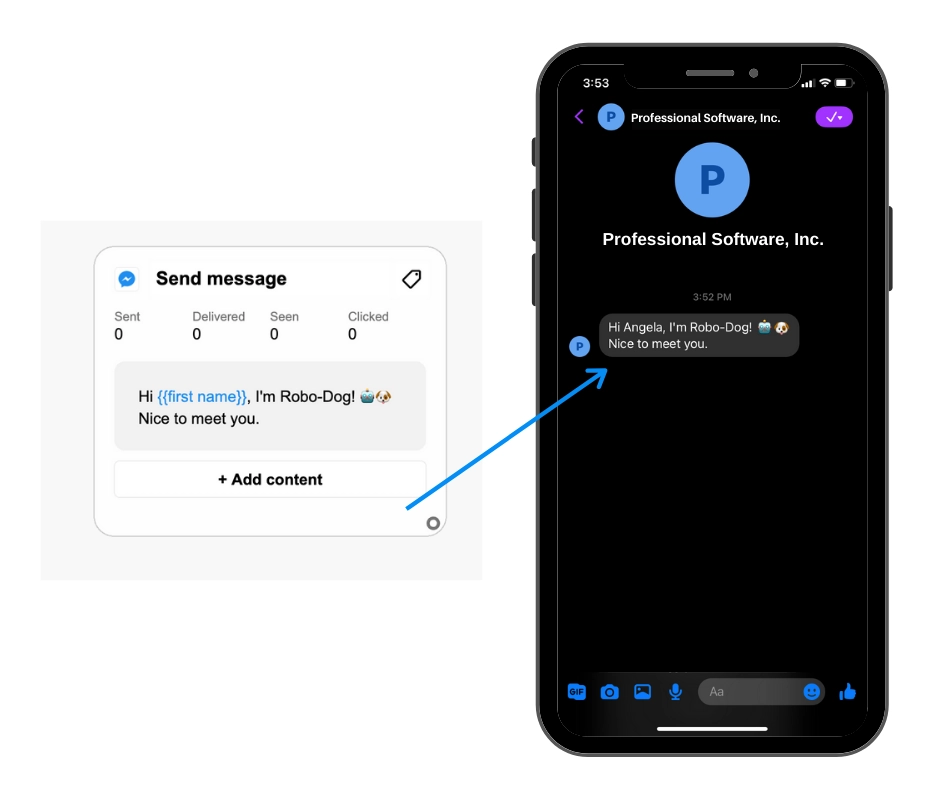
Chatbots are easy to customize for your brand
Your chatbot, like any other marketing channel or tool, should be an extension of your brand. That means you should write copy for it that matches your brand voice. You can give it a name and a personality that will resonate with your users. And of course, you can equip it with all the information they need for a smooth onboarding process, including answers to all the common questions new users have when interacting with your product.
Here’s how to set up your chatbot to answer common FAQs about your app or platform.
Chatbots can save you time
Each member of your customer success team is only one human. There will be times when they’re simply too busy to respond to new-user questions immediately, or even within the same day. This is where chatbots can step in and assist.
A Messenger chatbot can manage an unlimited number of user conversations at once. They can provide all the basic onboarding information and answer up to 80% of routine questions, taking all that work off the plate of your human customer service team. That way, you can have dozens, hundreds, or even thousands of new users being onboarded by your chatbot at once. The bot can send only the ones with complex inquiries through to a live chat session with your human support team, so they’re not overwhelmed or wasting time answering repetitive inquiries.
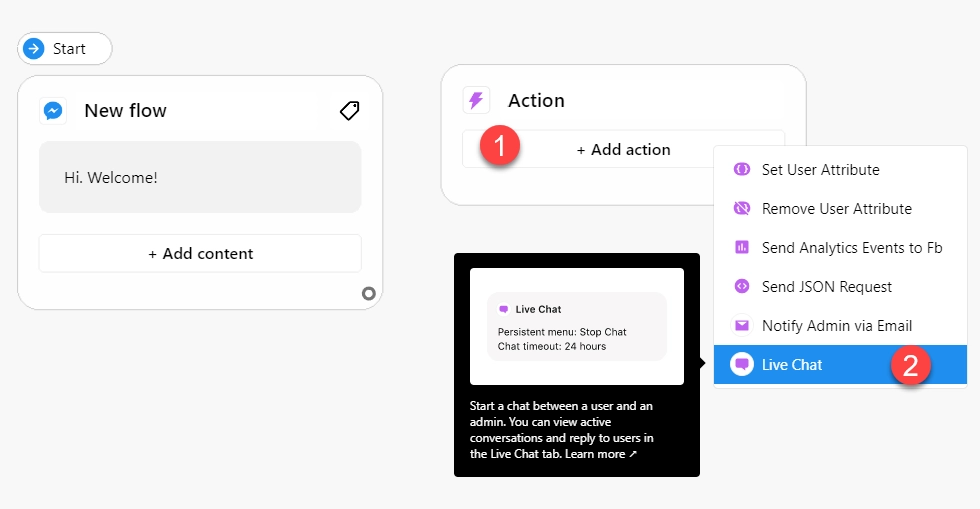
Chatbots are easy and pleasant to interact with
Create an onboarding experience your users will actually enjoy! Because chatbots are still a bit of a novelty for many consumers, interacting with them can be a unique and fun experience. Plus, they’re easy to use. As long as you have your chatbot give clear instructions, even inexperienced and non-tech users will go through its onboarding process easily. And the easier your chatbot is to use, the more successful the onboarding process will be, which leads to higher customer satisfaction and lower customer churn.
How to onboard new users with a chatbot
If we’ve talked you into considering chatbots to onboard new users into your app or software, let’s get into the next step: the how-to. Your onboarding chatbot will need to be customized closely for your specific platform or tool. But the basics are the same for any business. Just follow these three steps.
- Map out your onboarding process
First, you need to list out the key steps of your onboarding process. What needs to happen first, next, and last? What are the crucial pieces of information new users need to know? Which common questions need to be addressed right away? If you’ve already got an onboarding process on another channel (like email), you can use that framework to guide you here.
- Create your list of initial questions
Asking a few questions is arguably the best way to start a customer onboarding experience for your software or app.
First, the bot can store the user’s answers to these questions as user attributes. You can then use them for research and customer analysis. These questions might allow free-form user input (using the Save User Input plugin) or offer multiple-choice options (using quick replies). Some examples include:
What are your goals for using [name of tool or app]?
What industry do you work in?
How big is your company?
How did you hear about us?
Second, the chatbot can use the customer’s answers to the questions to customize and guide the onboarding experience it provides them. For example, your Messenger chatbot could ask new users:
Is this your first time using a tool like ours? (Yes/No)
Would you prefer to start with X or Y?
Do you want to learn how to do X, Y or Z?
After all, brand-new users won’t always know exactly what to expect from your service or what they can do, so it’s a good idea to put together questions that can guide them. Figuring out these questions should be relatively easy for you. You’re the one running your business, so you know exactly what you want customers to get out of your app or software.
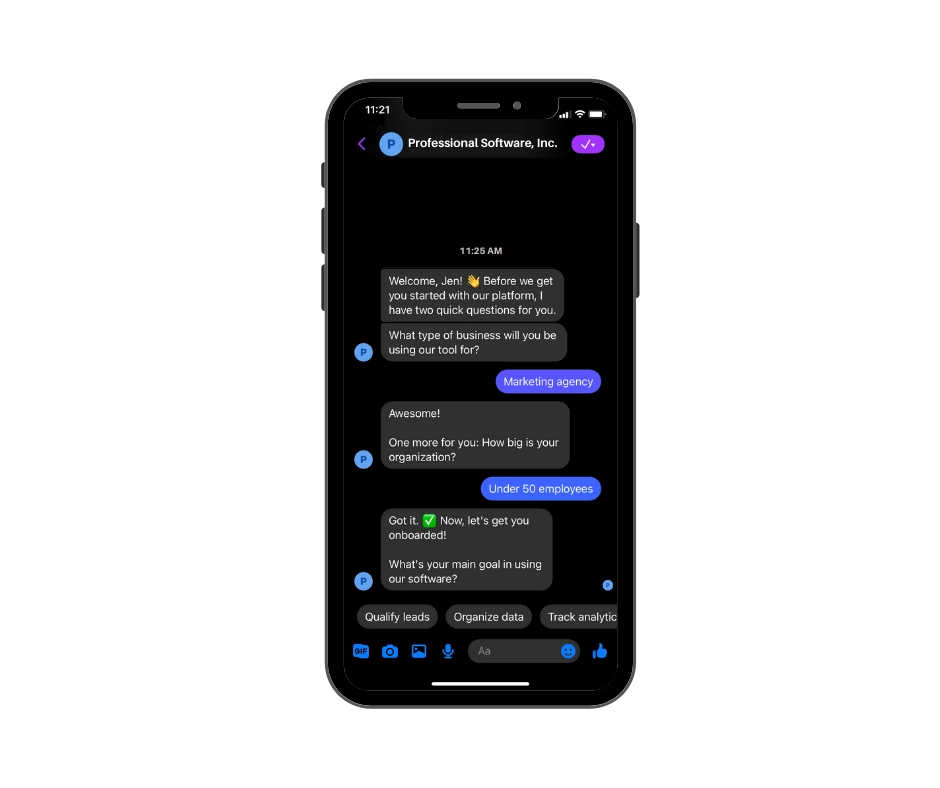
Once you’ve created the list of questions you want your Messenger chatbot to ask, you can set them up in Chatfuel’s Flow Builder easily. Just type the question into a text box and drag and drop the arrow to connect it to the next one.
- Test and monitor your chatbot
Before you launch your chatbot for all new users, you should test it. Have a few colleagues go through the flow to make sure it includes everything it should. Then, have a few beta testers try it out too. Choose people who have never used your software or app before, so you can get a real sense of whether the chatbot provides clear, useful instructions for new users. Take all their feedback into account and make the necessary adjustments.
And once you launch your chatbot, keep an eye on its stats and make changes as needed over time. You can use Chatfuel’s built-in stats to help you track how many users are going through the bot, and where they get stuck or drop off, if applicable. You can also have your chatbot ask users to rate their onboarding experience at the end of it (and even leave comments). Then, you should regularly make changes and updates to your bot based on all of this data.
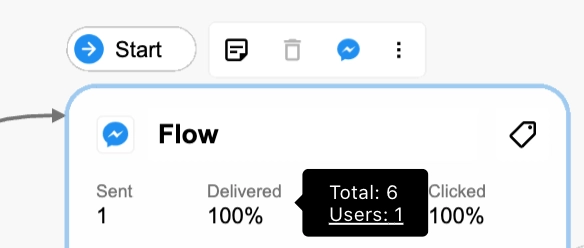
Tips for building an excellent onboarding chatbot
Keep these tips in mind to create an outstanding onboarding process via bot, so you can engage and retain even more new users.
Use images, GIFs, and video in your chatbot
When it comes to using a new app or piece of software, you’ll find that most users are visual learners. That means you should make use of images, GIFs, and video in your chatbot, so users can see its instructions and advice in action. Plus, media like this helps keep users engaged till the end of your onboarding sequence.
Write copy for an eighth-grade reading level
Readability is important for any type of sales, marketing, or support collateral—but it’s especially important in onboarding. The way you write copy for your onboarding chatbot can be the difference between users staying engaged and going on to be life-long customers of yours, and users dropping off and abandoning your tool altogether.
Around 80% of adults can read at an eighth-grade level, minimum. So it’s wise to keep your chatbot’s copy around this level for maximum readability. Use short, simple sentences. Avoid jargon and industry-specific acronyms (or define them clearly, if you do use them). You can even put your chatbot copy through a tool like the Hemingway App to test its readability and get suggestions improvement.
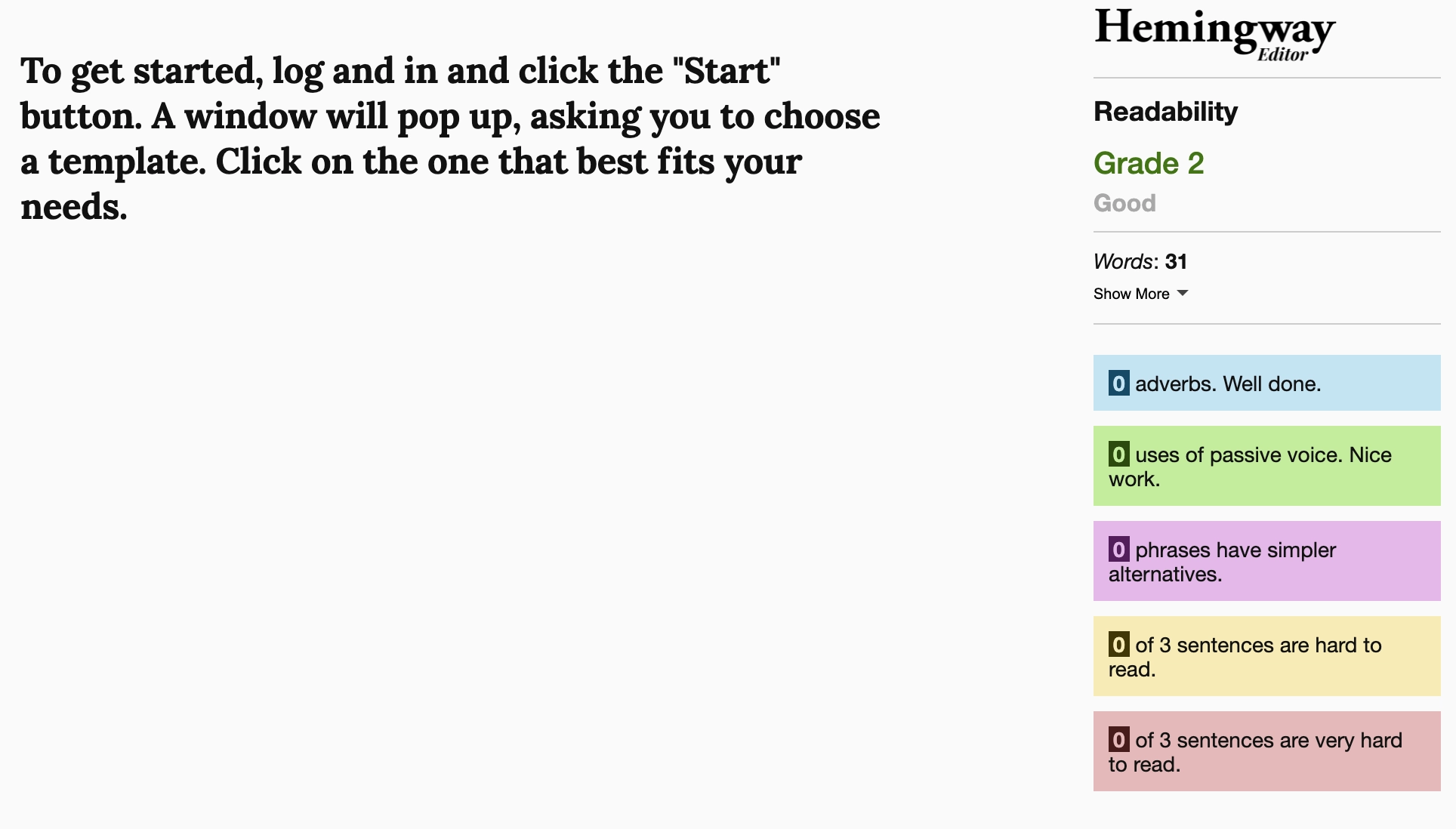
Make it easy for users to chat with a human instead
Not being able to find the answer to a specific question about your app or software is frustrating for users. If they have an issue or inquiry about your platform that the chatbot doesn’t address, let them use live chat to connect to one of your human agents right away. The longer you keep them waiting or make them search for the solution themselves, the less likely you are to retain them as a customer. Set up your chatbot to handle as many questions as possible, but keep some human agents on deck to jump in and help as needed.
Try a chatbot as your new onboarding method
Any app or software company knows that onboarding is one of the most crucial steps in the customer lifecycle. When you use a Facebook Messenger chatbot for onboarding, you can offer a unique, interactive, and trackable way to onboard users. Your chatbot can offer all the information new users need and can answer most of their questions. As a result, you’ll save time and resources and will retain more customers in the long-term.
To build an onboarding chatbot for your software or app, sign up for a free Chatfuel account today. There’s no coding or previous knowledge required to use our platform; just use our visual builder to drag and drop text and other elements into your bot’s flow.
